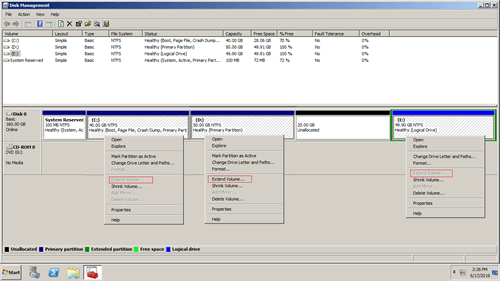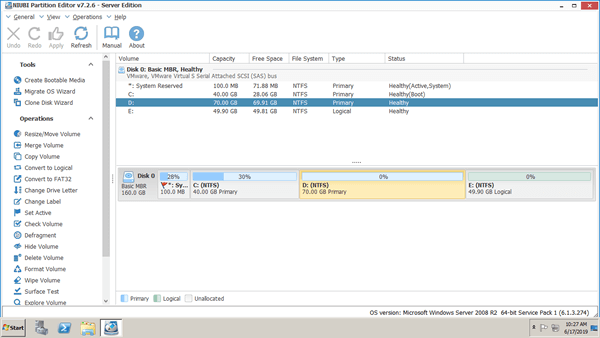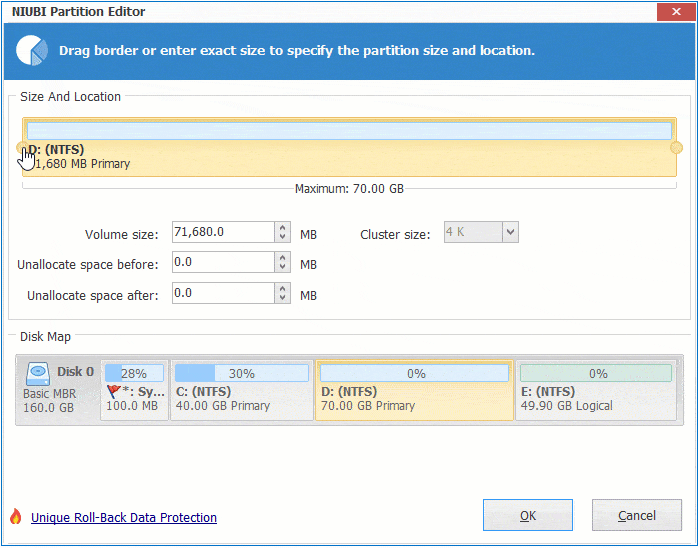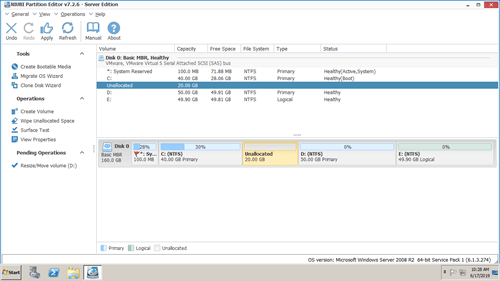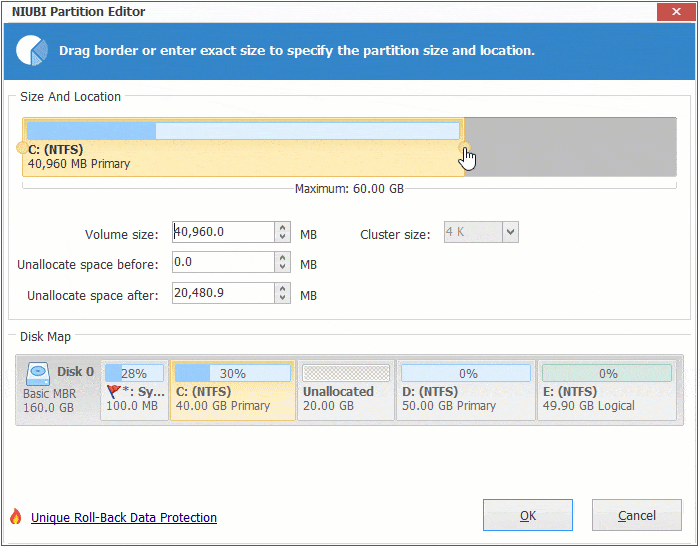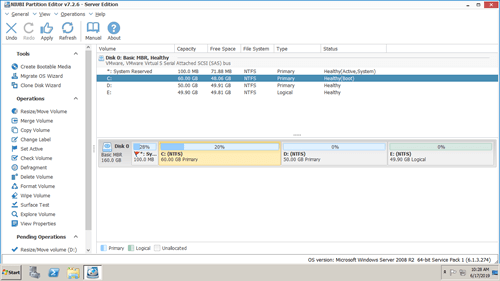It is very common that a server that disk partition is running out of space, especially to system partition C or the drives for exchange, database and backup. To database and backup partition, you can change settings and transfer files. But to system partition, it is more complicated. To solve this problem much faster and more easily, you can extend server partition with safe tool. This article introduces how to extend disk partition in Windows Server 2008/2012/2016/2019 without losing data.
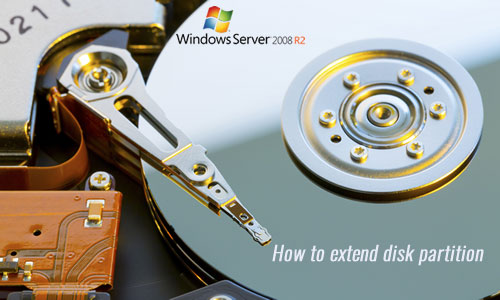
Extend Server 2008 partition without software
To extend partition in Windows Server 2008 (R2), there are 2 native tools - Diskpart and Disk Management. Diskpart works via command prompt and Disk Management works with graphical interface. Although they work in different way, they have similar restrictions including:
- The partition that you want to extend must be formatted with NTFS.
- There must be another partition on the right and in the same hard disk.
- The right adjacent partition can be deleted, and there must be other partition to transfer files.
Only when your disk partition configuration meets all above requirements, you can extend server 2008 partition without software.
How to extend Server 2008 partition with Diskpart:
- Press Windows and R together on the keyboard, type diskpart and press "Enter".
- Type list volume and press Enter in the command prompt window.
- Type select volume D and press Enter. (D is the right adjacent drive.)
- Type delete volume and press Enter.
- Type select volume C and press Enter. (C is the partition that you want to extend.)
- Type extend and press Enter.
How to extend Server 2008 partition with Disk Management:
- Press Windows and R together on the keyboard, type diskmgmt.msc and press "Enter".
- Right click the right adjacent partition (such as D:) and select "Delete Volume".
- Right click the partition that you want to extend (such as C:) and select "Extend Volume".
- Available space is selected by default, simply click Next till Finish in "Extend Volume Wizard" window.
Why you must delete the adjacent partition on the right before extending partition? Because:
- Both Diskpart shrink command and Disk Management Shrink Volume function can only make unallocated space on the right.
- Both Diskpart extend command and Disk Management Extend Volume can only combine unallocated space to the left contiguous partition.
As you see in my server, unallocated space is on the right of drive D after shrinking. C drive is nonadjacent to it and drive E is on the right, therefore, Extend Volume doesn't work.
If there is no or you can't delete the right contiguous partition, or the partition that you want to extend is formatted as FAT32, you need server partition software.
Extend partition with free space in other drive
Before extending partition in Server 2008/2012/2016/2019/2022, you should know that there's potential data loss risk with third party software. Some unreliable software could cause system boot failure, partition damage and data loss, so remember to back up before any operations.
Comparing with other tools, NIUBI Partition Editor is much safer and faster because of its powerful technologies:
- Virtual Mode - all operations will be listed as pending for preview, real disk partitions won't be modified until click "Apply" to confirm.
- Cancel-at-will - if you applied wrong operations, you can also cancel the ongoing operations without losing data.
- 1 Second Rollback - if any error is detected while resizing partition, it automatically reverts server to original status in a flash.
- Hot Clone - clone disk partition without rebooting to back up or migrate system and data.
- Advanced file-moving algorithm - move and extend partition 30% to 300% faster, saving much time especially if there are large amount of files.
As long as there's free space in a partition, NIUBI can transfer to other partition on the same disk.
How to extend partition C in Windows Server 2008 R2/2012/2016/2019:
Step 1: Download NIUBI Partition Editor and you'll see the main window with disk partition structure and other information.
Step 2: Right click drive D: and select "Resize/Move Volume", drag left border towards right in the pop-up window. You may also enter an amount in the box behind "Unallocated space before" (1024MB = 1GB).
Step 3: Right click C: drive and select "Resize/Move Volume", drag right border towards right to combine unallocated space.
To modify real disk partition, remember to click Apply on top left to execute.
Extend virtual partition in RAID, VMware/Hyper-V
When there's free space on a disk, do not break RAID array, there's no difference to extend partition in hardware RAID array or VMware/Hyper-V virtual disk.
If there is no other partition or no available free space in entire disk, no software can transfer space from other separate disk. In that case, there are several options with NIUBI, select the corresponding method according to your own disk partition structure.
The separated disk means Disk 0, 1, etc. shown by NIUBI or Windows Disk Management.
If you want to extend virtual partition for VMware or Hyper-V:
- Increase virtual disk size with their own tools, then additional space will be shown as unallocated space at the end of disk.
- Follow the steps in the video to move and combine unallocated space to C: drive (and other partition).
If you want to extend virtual partition on RAID array:
Firstly, confirm if your raid controller support RAID expansion with larger drives. It's much better if it does, then additional space will be shown as unallocated on the end after rebuilding raid array.
If it doesn't, follow the steps below:
- Insert a single disk which should be larger than the size of original raid array.
- Copy original raid array to the single disk.
- Build a new raid array with larger disks and then copy back from the single disk.
If there is no such large enough single disk, you have to build a new RAID and copy from original raid directly.
No matter how your disk partitions are configured (except dynamic disk), there's a way with NIUBI Partition Editor to help you extend partition on Windows Server 2008 fast and safely.

